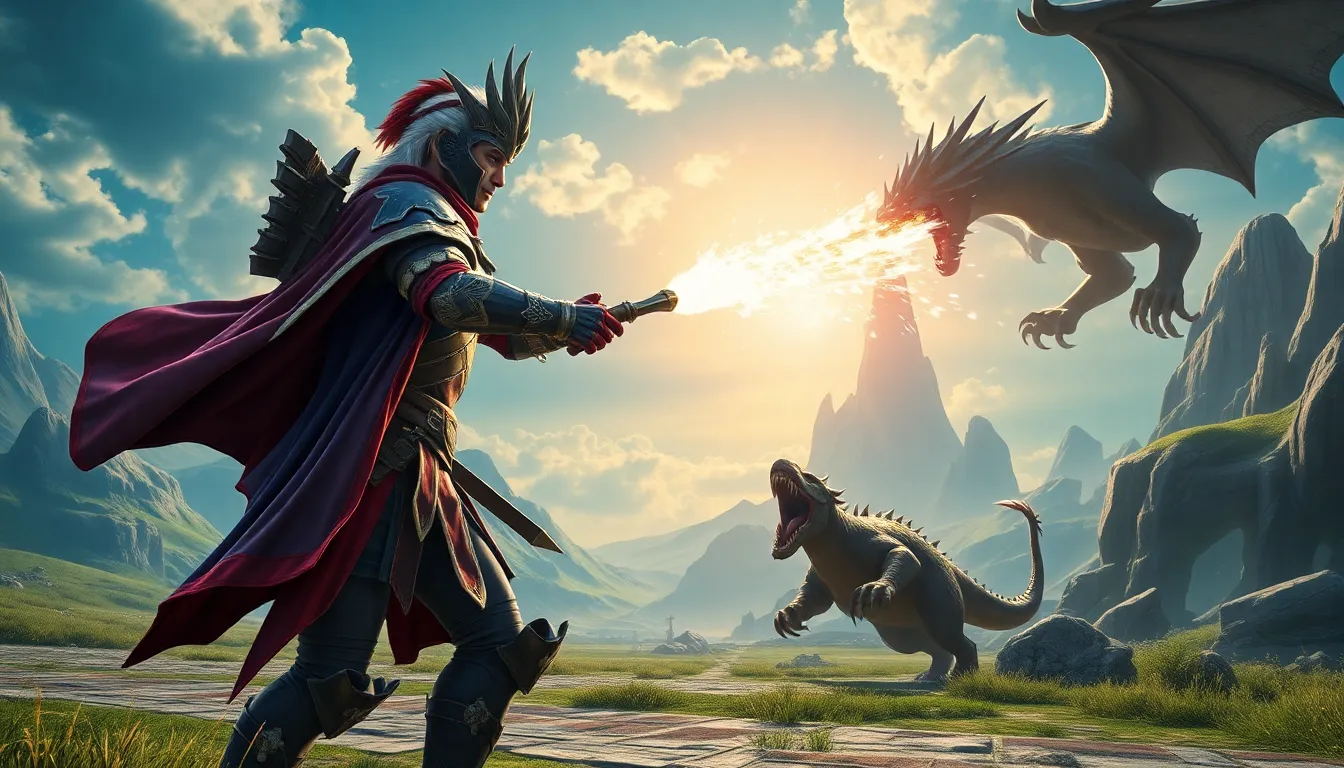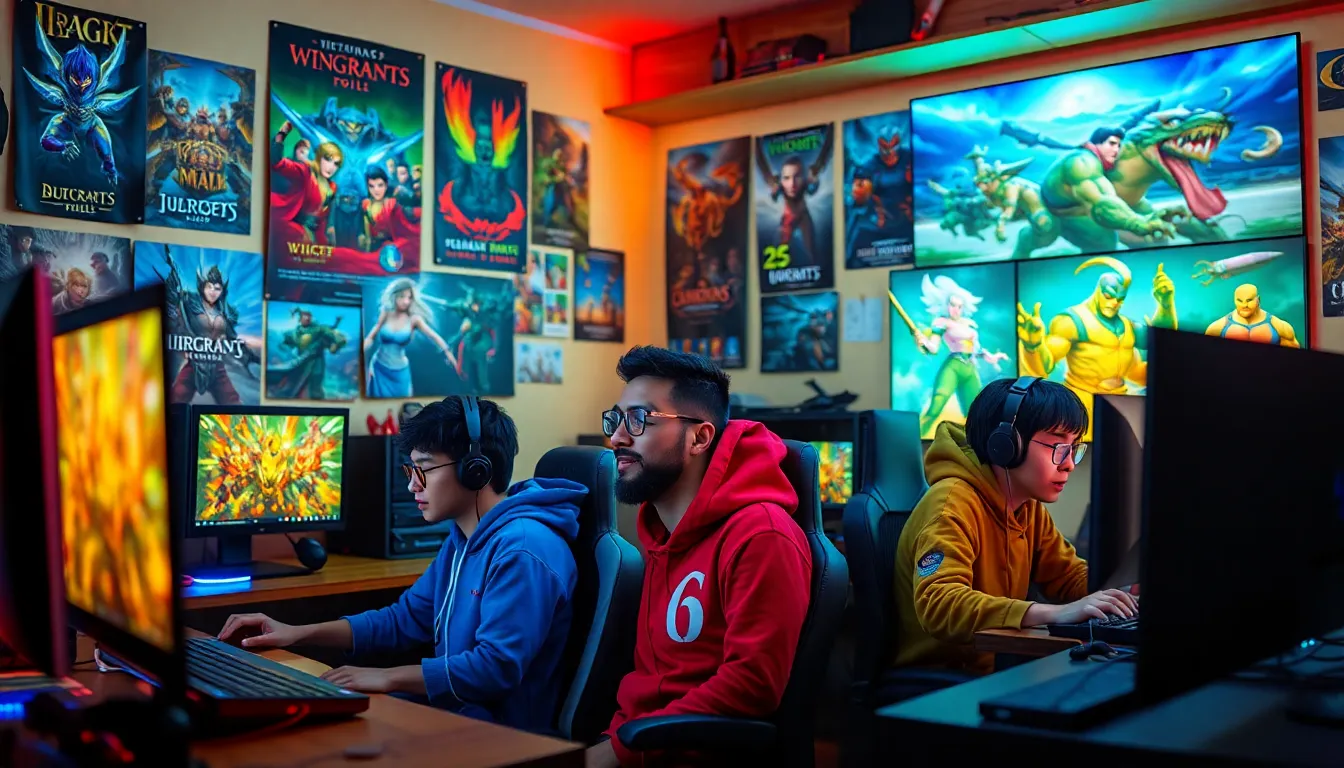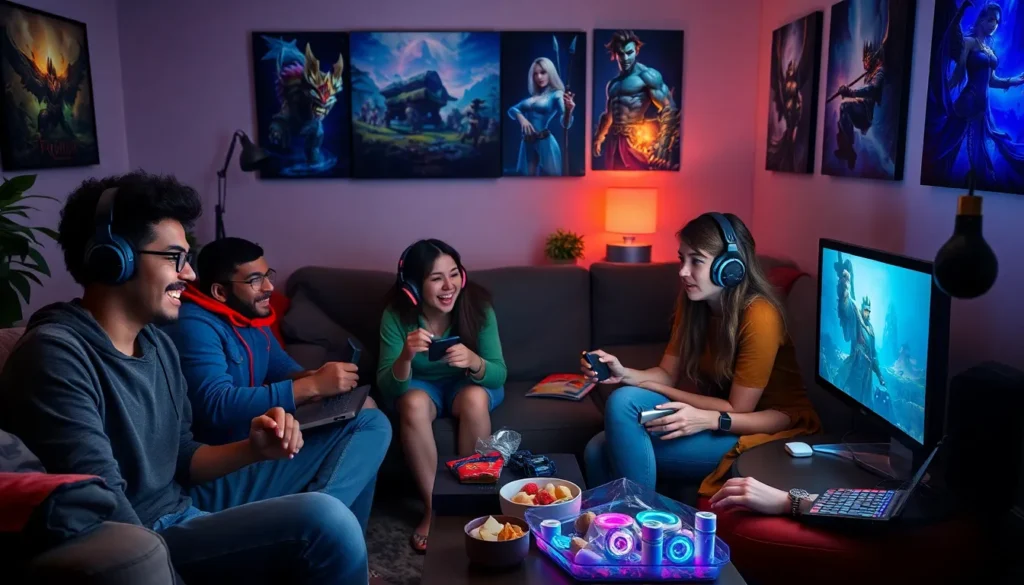Table of Contents
ToggleIn the vast universe of gaming, Massively Multiplayer Online (MMO) games stand out as a unique experience that brings players together from all corners of the globe. With their expansive worlds and intricate storylines, these games offer endless adventures and social interactions. Whether it’s battling fierce monsters or forging alliances with fellow gamers, MMOs provide an immersive escape that keeps players coming back for more.
As the genre continues to evolve, countless new titles flood the market, making it essential for gamers to find reliable reviews. MMO game reviews not only highlight gameplay mechanics and graphics but also delve into community engagement and long-term enjoyment. By exploring these insights, players can make informed choices about which worlds to dive into next, ensuring their gaming experience is as thrilling as possible.
Overview of MMO Game Reviews
MMO game reviews play a crucial role in the gaming community, offering insights into various aspects of each title. Reviews analyze factors such as mechanics, graphics, story, and player engagement, assisting gamers in selecting suitable options.
Components of MMO Game Reviews
- Gameplay Mechanics: Reviews examine combat systems, quest design, and player progression, highlighting how these elements impact the overall gaming experience.
- Graphics and Art Style: Visuals are assessed for quality, creativity, and how well they align with the game’s theme; this directly affects player immersion.
- Storytelling: The depth and coherence of narratives are evaluated, as compelling stories enhance player engagement and emotional investment.
- Community Engagement: Reviews discuss player interactions, guild systems, and events, emphasizing the importance of community in MMOs.
- Long-term Enjoyment: Ongoing content updates and replayability are analyzed to determine a game’s viability over time.
Trusted Sources for Reviews
- Gaming Websites: Established sites like IGN, GameSpot, and Kotaku provide comprehensive critiques backed by industry experience.
- YouTube Channels: Influencers who specialize in gaming deliver reviews with gameplay footage, offering visual insight into game mechanics.
- Forums and Community Feedback: Platforms such as Reddit and specialized gaming forums allow players to share personal experiences, adding diverse perspectives.
Importance of Objectivity
Objective reviews focus on factual analysis rather than personal bias, enabling players to make informed choices. Balancing pros and cons ensures a well-rounded view, equipping gamers with critical insights before initiating their adventure in new MMO titles.
Popular MMO Games Reviewed


This section explores notable MMO games, focusing on their unique features and gameplay mechanics.
Game 1: Overview and Features
Game 1 offers an expansive open world where players can explore various regions and engage in dynamic quests. Features include:
- Advanced Character Customization: Players enjoy numerous options for tailoring avatars to their preferences.
- Real-time Combat System: Quick reflexes and strategy define gameplay, enhancing the thrill of battles against NPCs or other players.
- Rich Storyline: The game includes a compelling narrative that evolves based on player choices, encouraging multiple playthroughs.
- Community Events: Regularly scheduled events foster player interaction, creating a vibrant in-game community.
Game 2: Overview and Features
Game 2 stands out with its unique mechanics and user engagement strategies. Key features consist of:
- Faction-Based Gameplay: Players choose between different factions, affecting gameplay dynamics and alliances.
- In-depth Crafting System: Crafting items plays a critical role, allowing players to create unique equipment and resources for trade.
- Dynamic World Changes: Environmental factors and player decisions significantly influence the game world, leading to unpredictable outcomes.
- Group Raids and Dungeons: Team-based challenges encourage cooperation among players, enhancing social interaction and strategic gameplay.
These standout titles exemplify the diverse experiences available within the MMO genre, showcasing their capacity to connect players and create immersive environments.
Gameplay Mechanics in MMO Games
Gameplay mechanics form the backbone of MMO experiences, defining how players interact with the game world and each other. Understanding these mechanics helps players appreciate the depth and complexity of their adventures.
Combat Systems
Combat systems in MMO games vary widely, influencing player strategy and engagement. Action combat offers real-time, skill-based challenges requiring precise timing and aiming. Tab-targeting combat provides a more traditional approach, focusing on target selection and cooldown management. Hybrid systems combine elements from both styles, engaging players through dynamic skill rotations while allowing for tactical positioning. Understanding the strengths and weaknesses of each system helps players choose their preferred gameplay style.
Progression and Leveling
Progression and leveling serve as essential components for player development in MMO games. Leveling systems vary, with traditional experience points awarded through quests and combat. Some games utilize skill-based progression, allowing players to improve specific abilities through use. Open-world games may incorporate dynamic events that grant experience for participation, encouraging exploration and interaction. Players experience a sense of achievement as they unlock new abilities, access higher-level content, and enhance their gaming experience through character customization and gear upgrades.
Community and Social Aspects
MMO games thrive on community and social interaction, creating a vibrant environment where players connect and collaborate. These social structures significantly enhance overall gameplay experiences.
Player Interaction and Engagement
Player interactions vary widely, involving chat systems, emotes, and in-game events. Players often engage through quests, trade, and raids, fostering teamwork and strategy. Many MMOs feature integrated voice chat, allowing real-time communication during high-stakes encounters. The frequency of player interactions boosts community building, with friendships often extending beyond the game. As guilds or groups form, their dynamics evolve, leading to shared goals and collective achievements.
Guilds and Clans
Guilds and clans play a vital role in MMO communities, acting as social networks for players. Each guild typically has distinct objectives, ranging from PvP-focused teams to resource-gathering factions. Membership often grants access to exclusive content, events, and rewards, enhancing player motivation to participate actively. Regular guild activities, such as raids and tournaments, encourage collaboration and strengthen bonds between members. The sense of belonging fosters loyalty among players, improving player retention and satisfaction.
Graphics and Audio Design
Graphics and audio design significantly influence the immersion and overall experience of MMO games. These elements create a captivating atmosphere that enhances player engagement.
Graphics Quality
Graphics quality showcases the visual appeal of an MMO. High-fidelity textures, detailed character models, and realistic environments contribute to an engaging visual experience. Many MMOs utilize advanced technology like Unreal Engine or CryEngine, enabling stunning landscapes and intricate designs. For example, Blade & Soul features vibrant colors and dynamic environments that draw players into its fantasy world.
Art Style
Art style varies among MMOs, shaping unique identities and attracting different player demographics. Stylized graphics, such as those in World of Warcraft, offer charm and accessibility, while photorealistic designs, like those in Guild Wars 2, appeal to players seeking realism. Each art direction influences player perception and emotional connection with the game.
Audio Elements
Audio elements play a crucial role in setting the mood and enhancing immersion. High-quality sound effects, voice acting, and orchestral soundtracks enrich the gaming experience. For instance, Final Fantasy XIV features a sweeping score that elevates storytelling and enhances emotional resonance during gameplay.
Sound Design
Sound design complements visual elements and reinforces gameplay mechanics. Effective audio cues signal player actions, enhancing feedback during combat and exploration. In many MMOs, distinct sounds accompany abilities, helping players identify critical moments in encounters. Consistent and well-integrated sound design enhances overall satisfaction and engagement.
These aspects of graphics and audio design work together to create immersive worlds in MMO games. They form essential components that deeply impact player experiences and enjoyment across various titles.







